For many individuals, double eyelid surgery is a transformative procedure that creates a crease in the upper eyelid, resulting in a more defined and vibrant appearance.
This popular cosmetic procedure is particularly prevalent among Asian populations, where it is often sought after to enhance the natural beauty of the eyes.
Unlike traditional blepharoplasty, which focuses on removing excess skin and fat, double eyelid surgery is centered on creating a supratarsal crease. Understanding the nuances of this procedure is crucial for potential patients.
Key Takeaways
- Double eyelid surgery creates a crease in the upper eyelid for a more defined appearance.
- The procedure differs from traditional blepharoplasty in its focus on creating a supratarsal crease.
- Candidacy requirements and surgical techniques vary depending on individual factors.
- Recovery expectations and potential complications should be carefully considered.
- Cultural considerations play a significant role in the decision-making process for this procedure.
Understanding Double Eyelid Surgery
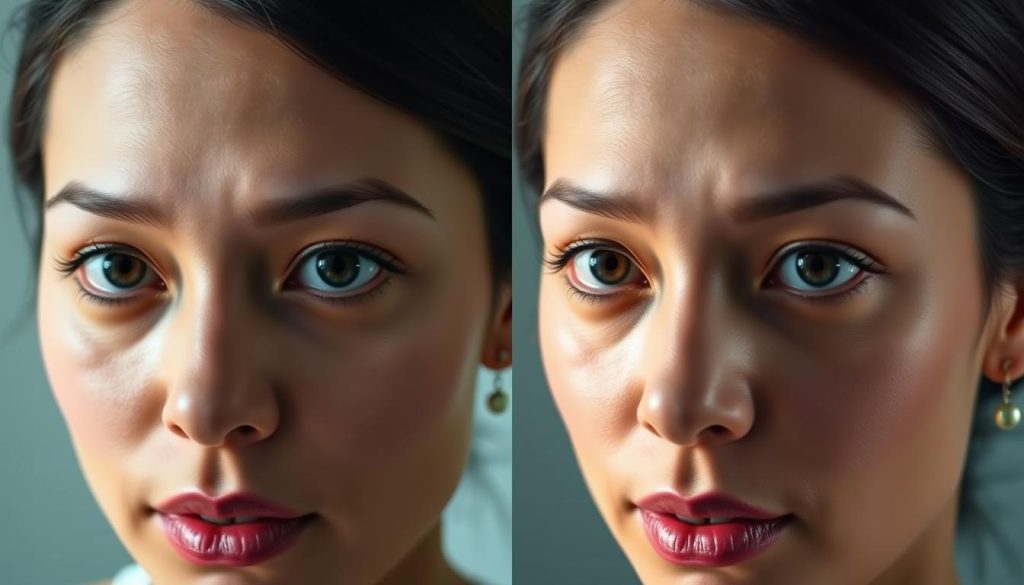
Double eyelid surgery is a cosmetic procedure that aims to create a crease in the upper eyelid, resulting in a more defined and aesthetically pleasing appearance. For individuals considering cosmetic enhancements, understanding double eyelid surgery is crucial.
What Are Double Eyelids?
Double eyelids refer to the presence of a visible crease in the upper eyelid, which can make the eyes appear larger and more expressive. This characteristic is often associated with a more youthful and vibrant appearance.
Why People Choose Double Eyelid Surgery
There are several reasons why individuals opt for double eyelid surgery. Some of the most common motivations include:
- Many patients seek double eyelid surgery for aesthetic reasons, desiring eyes that appear larger, more defined, and expressive.
- Practical considerations drive some individuals to pursue this procedure, as a defined eyelid crease makes applying makeup like eyeshadow and eyeliner significantly easier.
- Correcting asymmetry is another common motivation, particularly for those born with one double eyelid and one monolid.
- Some patients experience functional issues with monolids, including obstructed vision from excess skin or difficulty wearing contact lenses.
- Cultural and social factors may influence the decision, though modern perspectives increasingly emphasize personal choice rather than conformity to Western beauty standards.
The Difference Between Double Eyelid Surgery and Upper Blepharoplasty
Double eyelid surgery and upper blepharoplasty are two distinct procedures that address different concerns related to the eyelids. Double eyelid surgery is primarily performed to create a crease in the eyelid, giving the appearance of a larger, more defined eye.
Double Eyelid Surgery Specifics
This surgery is popular among individuals of East Asian descent who naturally have a monolid. The procedure involves creating a fold in the upper eyelid, enhancing the eye’s appearance. It is a relatively quick procedure with a straightforward recovery process.
Upper Eyelid Blepharoplasty Explained
Upper eyelid blepharoplasty, on the other hand, is typically performed on mature men and women who experience signs of aging, including excess skin and ptosis, or drooping of the eyelid. This procedure addresses age-related changes by removing excess skin and fat, sometimes tightening the underlying muscles to create a more refreshed appearance. It is commonly performed on patients of all ethnic backgrounds who experience functional or aesthetic concerns due to upper eyelid heaviness.
Ideal Candidates for Plastic Surgery Double Eyelid
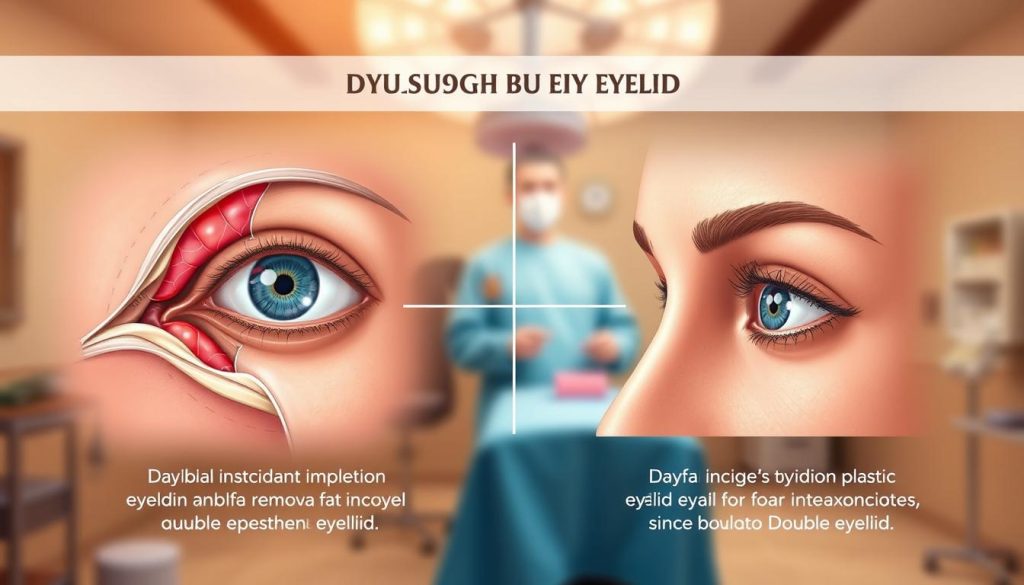
Determining whether you’re an ideal candidate for double eyelid surgery involves assessing both physical characteristics and overall health. The procedure, also known as double eyelid eyelid surgery, is designed to create a crease in the upper eyelid, making the eyes appear larger and more defined.
Physical Characteristics
Candidates for double eyelid surgery typically have certain physical attributes. They usually have an Asian eyelid without a natural crease, or they may have a very faint crease. The goal is to create a more defined eyelid crease that enhances the appearance of the eyes.
Health Requirements
Good overall health is crucial for candidates undergoing plastic surgery. Patients should not have any major ongoing medical treatments or conditions that could impair healing or increase surgical risks. Being a non-smoker or willing to quit smoking for several weeks before and after surgery is also a prerequisite, as smoking can negatively affect circulation and healing.
Key health and physical criteria include:
- Candidates must be in good overall health without uncontrolled medical conditions.
- Non-smokers or those willing to quit smoking make better candidates.
- Patients should have realistic expectations about the procedure’s outcomes.
- Those with certain eye conditions should discuss these with their plastic surgeon before proceeding.
- Psychological readiness is essential; candidates should pursue surgery for personal satisfaction.
Two Main Techniques for Double Eyelid Surgery
There are two main surgical methods for creating double eyelids, each with its own advantages and considerations. The choice between these techniques depends on various factors, including the patient’s anatomy and desired outcome.
Non-Incision Method
The non-incision method, also known as the suture method, involves creating a double eyelid crease without making any incisions. This technique is less invasive and offers a quicker recovery time.
Procedure Steps
The procedure involves using sutures to create a small fold in the eyelid, forming a crease. This method is relatively quick and can be performed under local anesthesia.
Advantages and Limitations
The non-incision method has several advantages, including minimal downtime and less swelling. However, it may not be suitable for everyone, particularly those with thick eyelids or excess skin.
Incision Method
The incision method involves making a small incision in the eyelid to create a double eyelid crease. This technique allows for more precise adjustments and can address additional concerns such as excess skin or fat.
Procedure Steps
During the incision method, the surgeon makes a precise incision along the desired crease line, removes excess skin or fat if necessary, and then sutures the wound to create a natural-looking crease.
Advantages and Limitations
The primary advantage of the incision method is its permanence, as it creates a structural change that typically lasts a lifetime. However, it requires a longer recovery time and carries a slightly higher risk of complications.

Comparing Non-Incision vs. Incision Methods
Understanding the differences between non-incision and incision double eyelid surgery is essential for making an informed decision. Both techniques have their advantages and disadvantages, which are crucial to consider.
Surgery Time and Recovery
The non-incision method typically offers a faster recovery time, making it appealing to those who wish to quickly return to their daily activities. In contrast, the incision method may require a longer recovery period due to the invasive nature of the procedure.
Results and Longevity
The incision method generally produces more defined and permanent results, with the crease maintaining its appearance for decades. On the other hand, non-incision results may fade over time, particularly in patients with thicker eyelid skin.
| Method | Recovery Time | Results Longevity |
|---|---|---|
| Non-Incision | Fast | 5-10 years |
| Incision | Slower | Decades or lifetime |
The Consultation Process
The consultation process is a critical step in determining the best approach for double eyelid surgery.

During this initial meeting, patients have the opportunity to discuss their goals and expectations with a qualified surgeon.
What to Discuss With Your Surgeon
It’s essential to inquire about the surgeon’s experience with eyelid surgery, their preferred techniques, and the potential risks associated with the procedure. Patients should also ask about the surgeon’s complication rates with double eyelid procedures to understand the potential risks involved.
Preparing for Your Consultation
To make the most of the consultation, patients should research potential plastic surgeons and prepare a list of questions. Bringing photos of desired eye shapes can help communicate aesthetic goals more effectively. Additionally, being ready to discuss budget and financing options is crucial, as double eyelid surgery is typically considered cosmetic and not covered by insurance.
What Happens During Double Eyelid Surgery
For those considering double eyelid surgery, understanding what happens during the procedure is essential. The surgery is tailored to the individual’s anatomy and desired outcome, ensuring a personalized approach.
Anesthesia Used
Local anesthesia is administered to ensure patient comfort during the double eyelid surgery procedure. This approach allows the patient to remain awake and responsive, facilitating precise measurements and adjustments.
Step-by-Step Surgical Process
The surgery begins with precise measurements and markings on the eyelid to ensure symmetry and proper crease placement. The surgeon then proceeds with either the incision or non-incision technique. For the incision method, excess skin, muscle, and fat are removed as needed, and attachments are created between the skin and underlying structures. With the non-incision approach, strategic sutures are placed through small punctures to form the crease. The procedure concludes with final adjustments and closure with fine sutures.
| Surgical Technique | Description | Recovery Time |
|---|---|---|
| Incision Method | Excess skin, muscle, and fat are removed; attachments are created between skin and underlying structures. | Typically longer |
| Non-Incision Method | Strategic sutures are placed through small punctures to form the crease. | Generally shorter |
Recovery After Double Eyelid Surgery
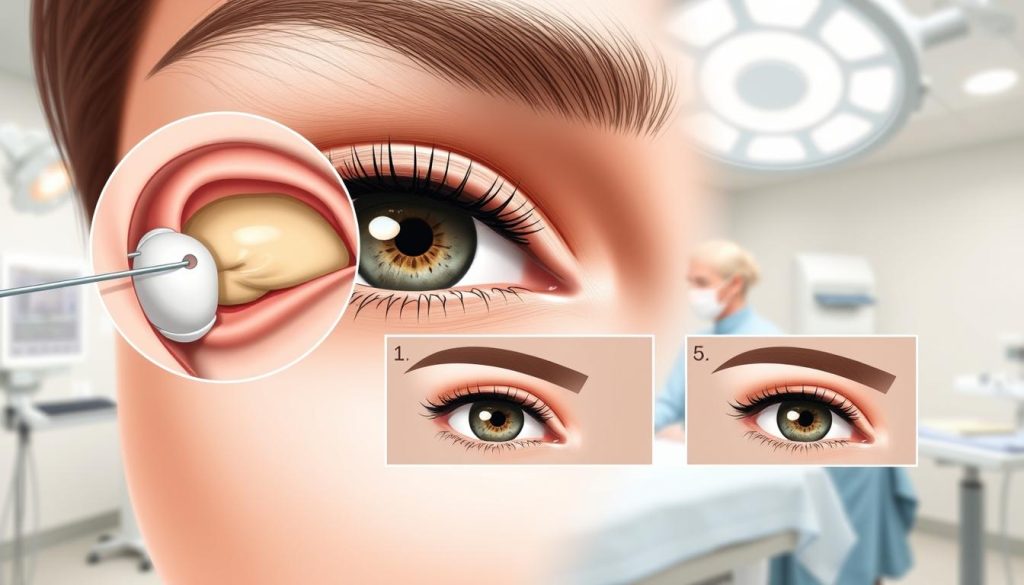
Double eyelid surgery recovery requires careful attention to ensure a smooth healing process. Proper care during this period is crucial for achieving the desired outcome.
Timeline for Healing
The healing process after double eyelid surgery typically takes several weeks. Swelling and bruising around the eyes are common during the first few days.
Post-Surgery Care Instructions
To ensure a smooth recovery, follow these guidelines:
- Keep the surgical area clean by gently cleansing with the prescribed solution.
- Sleep with your head elevated on 2-3 pillows for the first week.
- Apply cold compresses intermittently for the first 48 hours, then switch to warm compresses.
- Avoid strenuous activities and heavy lifting for at least two weeks.
- Refrain from wearing contact lenses for approximately three weeks.
- Protect your eyes from sun exposure with sunglasses.
- Follow all medication instructions precisely.
By following these care instructions, you can minimize complications and achieve the best possible results from your eyelid surgery.
Potential Risks and Complications
Understanding the potential risks and complications of double eyelid surgery is essential for making an informed decision. While the procedure is generally safe, there are possible side effects and complications that patients should be aware of.
Common Side Effects
Common side effects of double eyelid surgery include swelling, bruising, and redness around the eyes. These effects are typically temporary and resolve on their own within a few weeks. Some patients may also experience mild discomfort or dryness in the eyelid area.
- Swelling and bruising
- Redness around the eyes
- Mild discomfort or dryness
Serious Complications to Be Aware Of
Serious complications, although rare, can occur. These include infection, excessive bleeding, and scarring. In rare cases, patients may experience difficulty closing their eyes completely, a condition known as lagophthalmos. Other serious complications can include ectropion, where the lower eyelid turns outward, and vision changes.
- Infection and excessive bleeding
- Visible scarring
- Difficulty closing eyes completely
Cultural Aspects of Double Eyelid Surgery
As a cosmetic procedure, double eyelid surgery is intertwined with cultural identity and aesthetic preferences in various Asian cultures. The decision to undergo this surgery is often influenced by cultural norms and personal preferences.
Preferences in Eyelid Height Across Different Asian Cultures
Typically, individuals of North Eastern descent (e.g., China, Mongolia, Korea, Taiwan, and Japan) prefer a smaller eyelid height ranging from 3-6 mm. In contrast, individuals of South Eastern descent (e.g., Thailand, Vietnam, Myanmar, Indonesia, and Malaysia) prefer a taller eyelid, ranging from 7-10 mm.
Changing Perceptions and Trends
Modern perspectives on double eyelid surgery have evolved, recognizing it as an enhancement of natural Asian features rather than “Westernization.” There’s a growing trend toward more conservative, natural-looking results. Social media and global beauty trends have also influenced preferences, with many patients seeking subtle creases that complement their facial features.
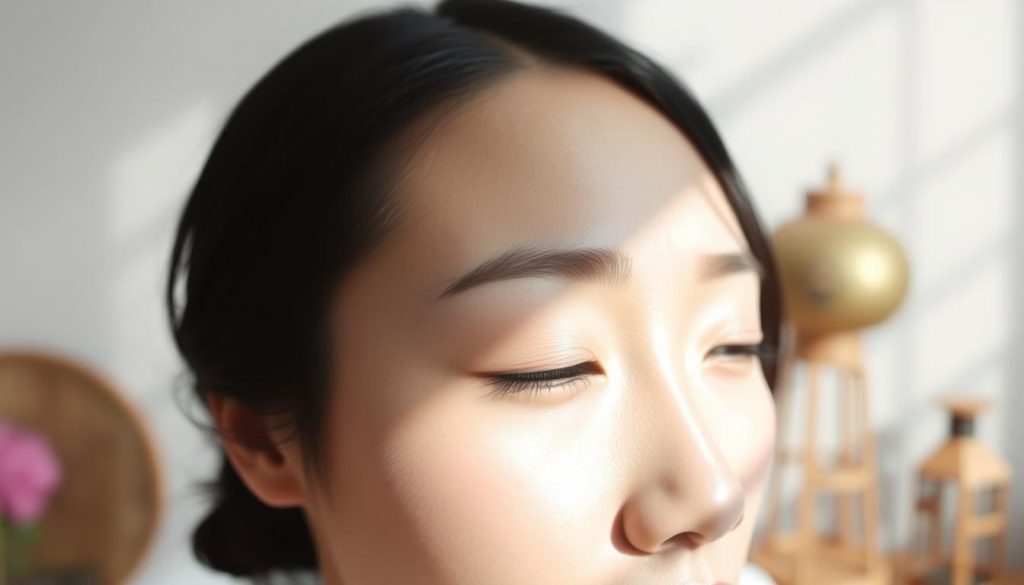
Combining Double Eyelid Surgery With Other Procedures
To maximize aesthetic benefits, some patients choose to undergo double eyelid surgery alongside other complementary procedures. This approach can lead to more comprehensive and satisfying results.

Epicanthoplasty
Epicanthoplasty is a surgical procedure that can be combined with double eyelid surgery to enhance the appearance of the eyes. It involves modifying the epicanthic fold, which is the skin fold at the inner corner of the eye. By doing so, it can make the eyes appear larger and more open.
Ptosis Correction
Ptosis correction addresses the drooping of the upper eyelid caused by weakness in the levator muscle. Many patients seeking double eyelid surgery also have mild to moderate ptosis, which can make their eyes appear smaller or tired. Combining ptosis correction with double eyelid surgery not only creates a crease but also lifts the entire eyelid to a more alert, open position.
- Ptosis correction involves adjusting the attachment of the levator muscle to strengthen its lifting effect.
- This combined procedure is particularly beneficial for patients whose monolids are accompanied by low-hanging upper eyelids.
Cost Considerations for Double Eyelid Surgery
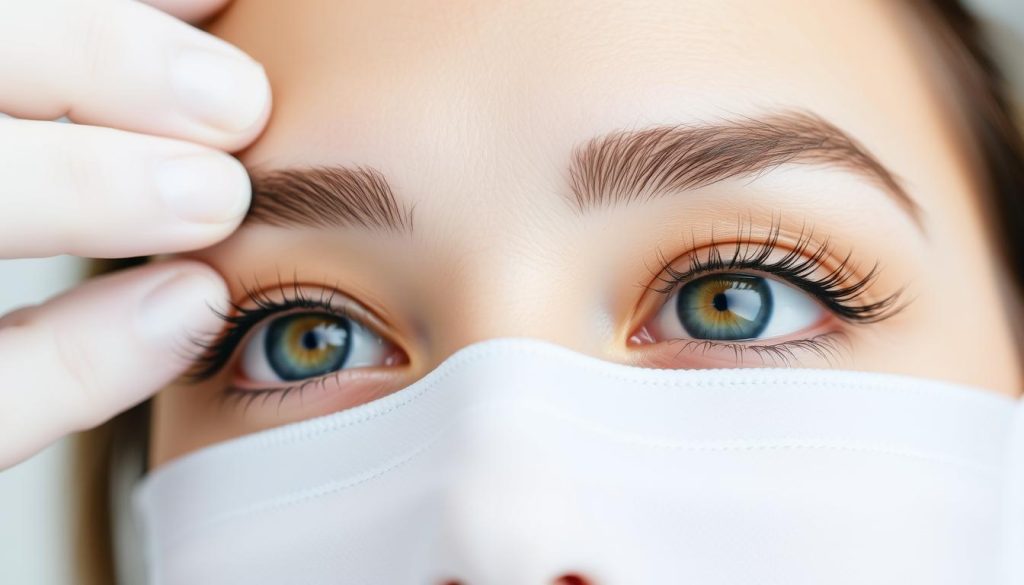
Understanding the cost of double eyelid surgery is crucial for individuals considering this cosmetic procedure. The expense associated with this surgery can vary based on several factors.
Factors Affecting Price
The cost of eyelid surgery is influenced by multiple elements, including the surgeon’s expertise, geographical location, and the complexity of the surgery. Patients should be aware that these factors can significantly impact the overall price.
Insurance Coverage Possibilities
In most cases, double eyelid surgery is considered cosmetic and thus not covered by health insurance plans. However, when upper eyelid surgery addresses functional issues like obstructed vision due to ptosis or excess skin, insurance may provide partial or full coverage.
- Double eyelid surgery is typically considered cosmetic and therefore not covered by health insurance plans in most circumstances.
- However, when upper eyelid surgery addresses functional issues like obstructed vision due to ptosis or excess skin, insurance may provide partial or full coverage.
- To qualify for insurance coverage, patients usually need to undergo visual field testing that demonstrates vision impairment caused by the eyelid position.
- Documentation from an ophthalmologist stating that the procedure is medically necessary, rather than purely cosmetic, is typically required for insurance consideration.
- Patients should consult with both their surgeon and insurance provider before surgery to understand potential coverage options and out-of-pocket expenses.
Taking the Next Step Toward Double Eyelid Surgery
To embark on your double eyelid surgery journey, start by researching board-certified plastic surgeons or oculoplastic surgeons specializing in Asian eyelid procedures. Review their before-and-after galleries to gauge their expertise.
Schedule a consultation with multiple surgeons to compare their approaches and communication styles. Prepare by gathering questions about the procedure, recovery, and expected outcomes, and bring photos illustrating your desired results.
After selecting your surgeon, follow pre-operative instructions carefully, and arrange for post-surgery assistance. Patience is key, as final results become apparent after swelling resolves.
FAQ
What is the difference between double eyelid surgery and upper blepharoplasty?
While both procedures involve the upper eyelid, double eyelid surgery specifically aims to create a crease in the eyelid, whereas upper blepharoplasty focuses on removing excess skin and fat. Although related, they address different concerns.
How long is the recovery time after eyelid surgery?
The recovery time varies, but most patients can expect to return to normal activities within two weeks. Swelling and bruising typically subside within a few days to a week.
Will there be a visible scar after the incision method?
The incision method involves making a small cut in the eyelid to create a crease. While there may be a scar, it is usually minimal and fades over time, becoming less noticeable.
Can ptosis or asymmetry be corrected during eyelid surgery?
Yes, ptosis (drooping eyelid) and asymmetry can be addressed during eyelid surgery. A qualified surgeon will assess the condition and determine the best course of action to achieve a more balanced appearance.
How do I choose the right surgeon for my eyelid surgery?
To choose the right surgeon, consider their experience, qualifications, and before-and-after photos of previous patients. It’s also essential to have a thorough consultation to discuss your goals and expectations.
What are the potential risks and complications of eyelid surgery?
As with any surgery, eyelid surgery carries risks, including infection, scarring, and asymmetry. A qualified surgeon will discuss these risks and help minimize them.
Can I undergo eyelid surgery if I have pre-existing eye conditions?
Certain pre-existing eye conditions may affect your eligibility for eyelid surgery. A thorough consultation with a qualified surgeon will help determine whether the procedure is suitable for you.
How long do the results of double eyelid surgery last?
The results of double eyelid surgery are generally long-lasting, but the aging process can affect the appearance of the eyelids over time. Maintaining a healthy lifestyle and following post-surgery care instructions can help preserve the results.
